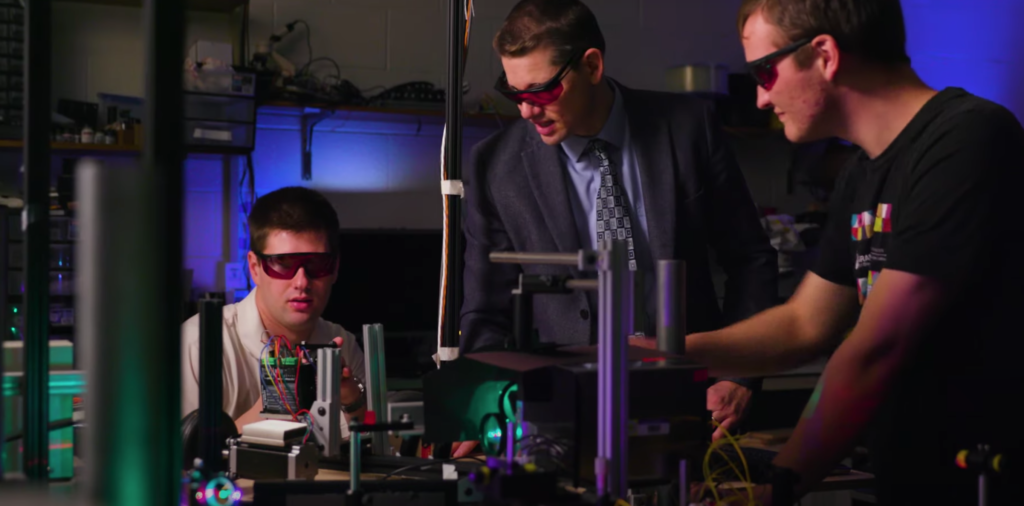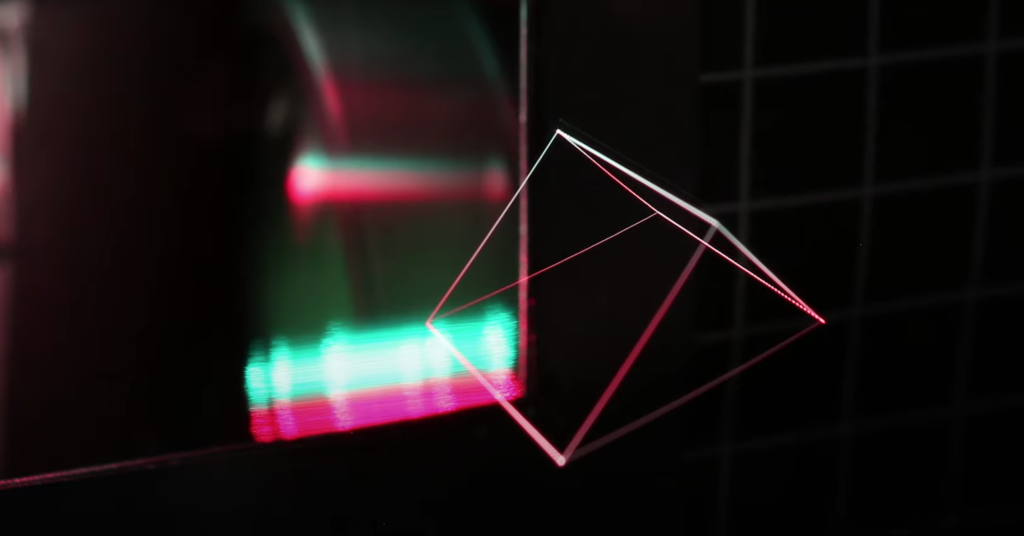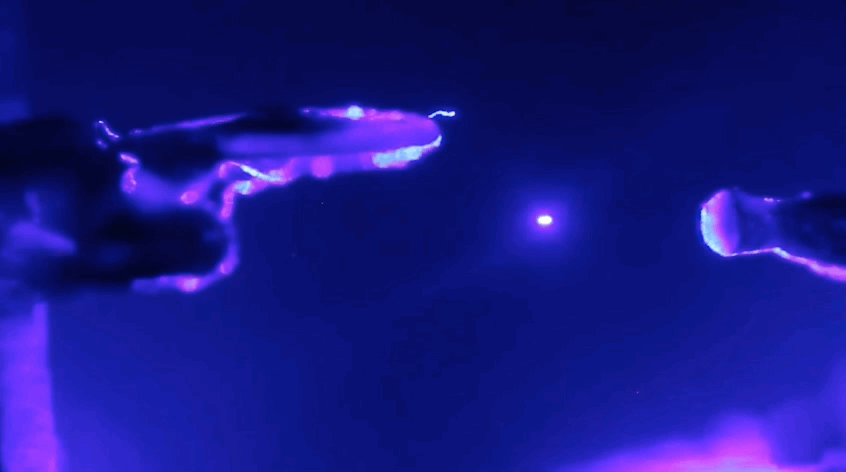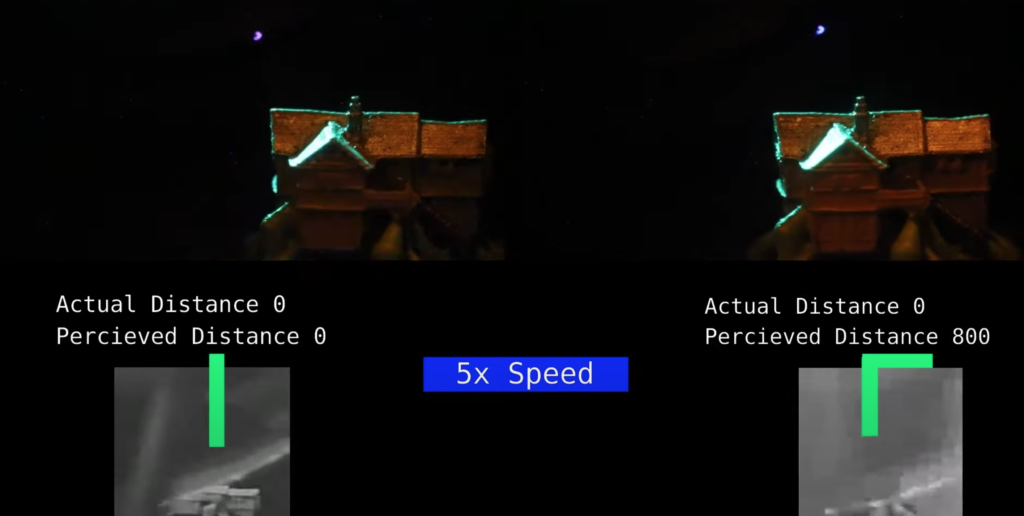A team at BYU is developing 3D holographic animations without the need for a dedicated headset or smartphone.
Researchers at BYU have created a free-floating 3D hologram that uses lasers and a tiny particle floating in the air to create digital images which can be viewed without the need of a dedicated AR headset.
Here’s how it works. BYU’s Holography Group uses a laser beam to trap a small particle in the air. Said laser beam is then used to drag the particle in multiple directions. When the particle is moved fast enough, the team is able to create colorful holographic animations viewable from all angles.
In a YouTube video produced by BYU, Dan Smalley—BYU Professor in Electrical Engineering—offers a quick demo of the process using a tiny version of the USS Enterprise and a Klingon Warbird. In the video, Smalley shows off an AR battle sequence complete with photon torpedoes, lasers, and explosions created using the above-mentioned process.
During the roughly four-minute video, Smalley talks about the battle between the two ships, saying, “What you’re seeing in this scene is real. There is nothing computer-generated about it. These are real lasers moving around in space between these two ships.”
This project is built off of an earlier BYU project from 2018, a hologram device called the Optical Trap Display (OTD) capable of producing tiny 3D holograms. From there, Smalley and his team spent the next three years improving their OTD technology to include real animation, bringing us one step closer to high-quality holographic experiences, such as the Holodeck featured in Star Trek or the holographic communications in Star Wars.
As mentioned earlier, BYU’s free-floating 3D imagery is built around a single particle, which means—technically—these are physical holograms. But because they’re built off a lone particle, interactivity is limited. You can, however, perform small actions, such as having a tiny holographic stick figure bounce up and down on your finger.
Part of the tech behind the free-floating holographic images requires a volumetric display projecting an image within a fixed volume. Because the images are built around a glowing particle inside that fixed volume, the team is able to produce tiny 3D holograms. According to BYU Graduate Student Wesley Rogers, it is possible to create larger holograms using their system, though the process sounds significantly more complex: “If for example, I wanted to display a mountain and I wanted it to look like the size of a real mountain, I would have to build a volumetric display the size of a mountain.”
That’s a pretty big volumetric display!
However, the team at BYU can use some optical tricks to create the illusion of something like a moon outside of a house. Using a technique referred to as motion parallax, they are able to make the display look a lot bigger than it actually is by changing the image as you move through a scene.
“We now have the ability as our images get bigger to create experiences that are beyond our drawing volume,” said Smalley, adding “You can create environments that are outside rooms or beyond windows.”
You can learn more about the project via the BYU Electro-Holography Lab website.
The post Researchers Are Using Laser Beams To Create 3D Holograms appeared first on VRScout.







